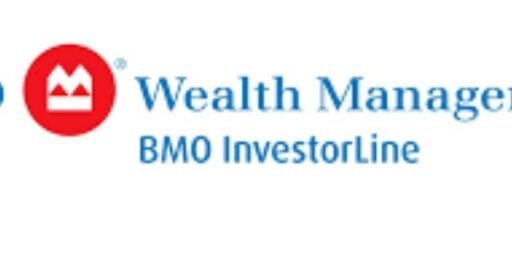Smith Manoeuvre/Dividend Portfolio – Q2 2014 Update
For those of you just joining us, listed below is my portfolio that is leveraged with money borrowed from my home equity line of credit (HELOC). As the money borrowed is used to invest, the interest charged is tax deductible. I started this portfolio in 2008 (at the height of the market) and write updates every quarter (or so) to show new positions added along with any market gains/losses. For more details on the strategy and procedure, check out my modified smith manoeuvre strategy and my comparison of online stock brokerages.
It has been about four months since the last update (March 2014) with a very little activity in the leveraged portfolio. With valuations quite high right now, it’s difficult for me to buy in this market. However, I did manage to add one new position and received dividend raises along the way. Also note that the yield displayed below is the “yield on cost” which is the current dividend rate on my original cost. I display this to illustrate the power of dividend growth over time.
New position:
- 100 shares of Teck Resources. For those of you who have followed my updates for a while, you may recall that I used to own TCK in this portfolio but sold it when they dropped their dividend. However, they have since reinstated their dividend with a reasonable valuation. This stock is highly volatile, but gives the portfolio some exposure to the mining sector.
Dividend growth:
Since this portfolio is focused on dividend growth stocks, the portfolio did not disappoint where a number of dividend paying positions increased their distributions since the last update. The dividend increases came from:
- CIBC (CM) again, Bank of Montreal (BMO), George Westin (WN). Transcontinental (TCL.A), Baytex Energy (BTE), Finning International (FTT), and SNC Lavalin (SNC).
Stock Split:
Calfrac Well Services (CFW) split their shares 2:1, which means existing shareholders double their units, but the stock price itself splits in half. The stock split did not change the dividend yield of the company.
Watch List:
My dividend watch list remains similar where I am looking to increase my positions in CU, IMO, SNC, TD and possibly add new positions in Cineplex (CGX), and Canadian National Railway (CNR) when/if their valuations become attractive (let me know if there are any ideas that I’m missing out on).
As of today, this portfolio generates about $5,603 / year in Canadian eligible dividends, compared to around $5,000 at the end of 2013. In the near future, I may provide portfolio income updates based on all portfolios to get a better idea of our journey towards financial freedom.
The Smith Manoeuvre Portfolio as of August 4, 2014 (prior to open) – note that any changes to the portfolio are indicated in bold.
| Stock | Symbol | Shares | Avg Buy Price | Total | Div/Share | Yield |
| Royal Bank | RY.T | 100 | $48.39 | $4,838.99 | $2.84 | 5.87% |
| CIBC | CM.T | 45 | $67.14 | $3,021.25 | $4.00 | 5.96% |
| Power Financial | PWF.T | 155 | $32.11 | $4,976.64 | $1.40 | 4.36% |
| Scotia Bank | BNS.T | 105 | $41.91 | $4,400.52 | $2.56 | 6.11% |
| Manulife Financial | MFC.T | 125 | $33.12 | $4,139.48 | $0.52 | 1.57% |
| Fortis Properties | FTS.T | 150 | $25.63 | $3,843.98 | $1.28 | 4.99% |
| TransCanada Corp | TRP.T | 100 | $33.50 | $3,349.74 | $1.92 | 5.73% |
| AGF Management Limited | AGF.B.T | 50 | $22.71 | $1,135.49 | $1.08 | 4.76% |
| Bank of Montreal | BMO.T | 45 | $54.97 | $2,473.83 | $3.12 | 5.68% |
| Husky Energy | HSE.T | 135 | $32.53 | $4,391.27 | $1.20 | 3.69% |
| TD Bank | TD.T | 100 | $24.12 | $2,412.23 | $1.88 | 7.79% |
| Enbridge | ENB.T | 130 | $28.39 | $3,690.38 | $1.40 | 4.93% |
| TransAlta | TA.T | 50 | $21.47 | $1,073.49 | $0.72 | 3.35% |
| First Capital Realty | FCR.T | 222 | $11.72 | $2,601.03 | $0.84 | 7.17% |
| Canadian Utilities | CU.T | 100 | $18.20 | $1,819.99 | $1.07 | 5.88% |
| Ensign Energy Services | ESI.T | 200 | $14.98 | $2,995.98 | $0.47 | 3.14% |
| Mullen Group | MTL.T | 200 | $17.98 | $3,596.97 | $1.20 | 6.67% |
| Rogers Communications | RCI.B.T | 125 | $36.25 | $4,530.97 | $1.83 | 5.05% |
| George Westin Ltd | WN.T | 50 | $68.64 | $3,441.99 | $1.68 | 2.44% |
| Pason Systems | PSI.T | 200 | $13.97 | $2,793.98 | $0.60 | 4.29% |
| Corus Entertainment | CJR.B.T | 150 | $21.67 | $3,250.98 | $1.09 | 5.03% |
| Thompson Reuters | TRI.T | 90 | $33.40 | $3,006.18 | $1.32 | 3.95% |
| Canadian Pacific Railway | CP.T | 30 | $54.23 | $1,626.99 | $1.40 | 2.58% |
| Canadian Oil Sands | COS.T | 150 | $19.14 | $2,871.48 | $1.40 | 7.31% |
| Leons Furniture | LNF.T | 200 | $12.06 | $2,412.98 | $0.40 | 3.32% |
| Encana | ECA.T | 100 | $18.82 | $1,881.99 | $0.28 | 1.49% |
| Transcontinental | TCL.A.T | 200 | $11.32 | $2,263.98 | $0.64 | 5.65% |
| Calfrac Well Services | CFW.T | 300 | $12.12 | $3,635.98 | $0.50 | 4.13% |
| Baytex Energy Corp |
BTE.T | 35 | $42.98 | $1,504.14 | $2.88 | 6.70% |
| Finning International | FTT.T | 200 | $22.95 | $4,589.98 | $0.71 | 3.09% |
| SNC Lavalin Group | SNC.T | 50 | $38.55 | $1,927.49 | $0.96 | 2.49% |
| Crescent Point Energy | CPG.T | 50 | $37.13 | $1,856.49 | $2.76 | 7.43% |
| Bird Construction | BDT.T | 250 | $13.12 | $3,280.98 | $0.76 | 5.79% |
| Calian Technologies | CTY.T | 150 | $20.55 | $3,082.98 | $1.12 | 5.45% |
| Imperial Oil | IMO.T | 50 | $42.81 | $2,140.49 | $0.52 | 1.21% |
| Potash Corp | POT.T | 100 | $37.64 | $3,763.98 | $1.40 | 3.72% |
| Emera Inc | EMA.T | 100 | $31.05 | $3,104.98 | $1.45 | 4.67% |
| BCE Inc | BCE.T | 50 | $41.68 | $2,083.99 | $2.47 | 5.93% |
| Major Drilling Group | MDI.T | 450 | $7.71 | $3,467.98 | $0.20 | 2.60% |
| Bombardier Inc | BBD.B.T | 600 | $3.58 | $2,145.99 | $0.10 | 2.80% |
| Teck Resources | TCK.B | 100 | $25.58 | $2,567.99 | $0.90 | 3.50% |
More Stats
- Total Cost Base of Equities (inc. fees): $121,996 (vs. $119,428)
- Market Value of Equities (not including dividends or cash): $164,701 (vs. $154,535)
- Total Dividends / Year: $5,603.03 (vs. $5,462.43)
- Portfolio Dividend Yield on Cost: 4.59% (vs. 4.57%)
- Portfolio Dividend Yield: 3.40%
Sector Allocation (based on market value)
- Financials: 23.12% (vs. 22.93%)
- Utilities: 7.79% (vs. 8.16%)
- Energy: 30.38% (vs. 30.63%)
- Resources: 4.04% (vs. 2.55%)
- Real Estate: 2.56% (vs, 2.54%)
- Consumer/Telecom: 13.19% (vs. 14.04%)
- Other: 18.91% (vs. 19.15%)
Common Questions:
Why the high concentration in financials and energy?
With regards to sector allocation, you may notice that this portfolio is fairly concentrated in financials and energy. Note though that this is one of my accounts where I treat all of my accounts as one big portfolio. In other words, I consider this account to be my Canadian exposure (which is mostly financials and energy) and my US, international and other sector equity exposure in other accounts.
Why don’t you use a dividend ETF instead?
Couple of reasons, first, most Canadian dividend ETFs hold stocks that distribute return of capital which can affect the tax deductibility of the investment loan. Second, the MER eats into the dividend. I keep the expenses in this portfolio very low through occasional buying but rarely selling.
Should I start the Smith Manoeuvre?
There have been a lot of readers who have mentioned that they are interested in a leveraged portfolio. Over the long term it may be lucrative. However, over the short term, equities are volatile and can put the portfolio deep in the red. My portfolio during 2008 is a prime example of what can happen. If you can’t stomach losing 20-30% in the portfolio in any given year, then your risk tolerance isn’t suited for leveraged investing. Here is an article I wrote answering a reader question “Should I Start the Smith Manoeuvre?”
Disclaimer: The securities mentioned in this post are not recommendations to buy or sell and should be used for informational purposes only.
I've Completed My Million Dollar Journey. Let Me Guide You Through Yours!
Sign up below to get a copy of our free eBook: Can I Retire Yet?










@FT, lucky you! I’ve got just over $100k left on my mortgage with the plan of converting my remaining payments into a Smith-portfolio as payments are made over the next 4-5 years (about $22k in mortgage payments a year at this point).
I suppose if all goes well, I can continue to invest more into the SM over time or in larger amounts.
Just to confirm; you are using the approx. $5,600 in annual dividends to pay down your existing mortgage and reinvesting that borrowed amount in the SM portfolio, right?
I started my SM with some baby steps; took the sum of my 2014 mortgage payments made to date and borrowed it back out of my HELOC and invested in proper Canadian dividend-bearing equities and waiting for the monthly/quarterly dividends to start rolling in.
@JT, we paid off the instalment portion of our mortgage a few years ago. The dividends are reinvestd in the portfolio.
We also own TCK so we are glad to be a fellow shareholder. We also agree that they seem to be back on the right track with their dividends. Thanks for sharing…Keep up the great work!! AFFJ
Thanks for the tips and advice. Very inspiring.
I have 3 years left before my mortgage is up for renewal. It was not of the readvanceable kind.
My questions:
1. My home cost significantly less than the pre-approved mortgage amount. Would I get the benefits of the SM if I take a line of credit and invest that money in non-registered investments?
2. My rate of interest for my mortgage is 2.79%. I haven’t checked but I don’t expect that the LOC interest rate will be lower than that. It may not be sensible to in effect, replace the mortgage with an investment loan where the rate of interest is higher unless of course the investment returns are much higher than the LOC rate of interest.
3. How big should the loan be? Any recommendation relative to the size of the mortgage/income?
4. What if one pays off each loan taken in the same year? Any downside to that? I’m not sure if I can do that but loans don’t excite me and I would be very focused in getting rid of the debt.
What do you advise?
Thanks a lot!
Thank you SC, it sounded too good to be true, but I was not sure if interest of borrowed money invested in TFSA was considered effectively the same as RRSP.
@on the fence
If you invest your HELOC into your TFSA, the interest on your HELOC is not tax deductible. The point of the SM is to invest it in an unregistered account thus making your interest payments in your HELOC tax deductible.
Does either BMO or RBC allow the capitalization of the HELOC interest payments?
Thank you FT.
Can I use the HELOC portion of my mortgage to invest in income producing dividend paying stocks in a self-directed TFSA investment account?
If the mortgage is held by a couple, can the HELOC portion be invested in two TFSA investment accounts, held by each person?
Am I trying to push it too far?
I hold a similar portfolio heavy on financials no ETFs, but mortgage is now paid off thanks to the Smitih Manoeuvre. Now what? hold and wait or begin to sell off?
Great Progress FT,
Great to see a high quality porfolio with dividend yield on cost of 4.59%, this is the power of dividend growth. You may consider adding Tim Hortants to sweet up the SM.
I don’t have mortgage/HELOC yet, I will implement the SM in few years.
Best Regards,